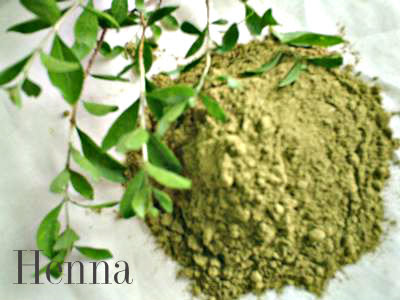*Check out my art website to see some before and after photos of Henna and Jagua under my Body Art Gallery. Click on the link>>> Ashley Antolin Art Website
Henna ( Lawsonia Inermis )
"Henna (Lawsonia inermis, also called henna tree) or Hina is a flowering plant, the sole species in the genus Lawsonia in the family Lythraceae.
The name is also used for natural dye preparations derived from the plant, and for the art of temporary tattooing based on those dyes. Henna has been used since antiquity to dye skin, hair, fingernails, leather and wool.
Additionally, the name is misused for chemical skin dyes, such as black henna, which are NOT derived from the plant. Black henna is NOT real henna. NEVER get black henna. It is dangerous, it can cause an allergic reaction and burn scars into the skin.
Real henna is safe, organic and painless. Henna only stains brownish colors ranging from orange, brown to red. Henna paste is made with powdered henna leaves, usually green, brown or dark brown almost black in color.
Henna paste is usually applied on the skin using a plastic cone or a paint brush, but sometimes a small metal-tipped jacquard bottle. After about 15–20 minutes, the mud will dry and begin to crack, and during this time, a mixture of lemon juice and white sugar can be applied over the henna design to re-moisten the henna mud so that the henna will stain darker. The painted area can also be wrapped with tissue, plastic, or medical tape to lock in body heat, creating a more intense colour on the skin. The wrap (not a traditional method and also optional), is worn for 3 to 6 hours, or sometimes overnight and then removed.
When first removed, the henna design is pale to dark orange in colour and gradually darkens through oxidation, over the course of 24 to 72 hours. The final color is reddish brown and can last anywhere from one to three weeks depending on the quality and type of henna paste applied, as well as where it was applied on the body (thicker skin stains darker and longer than thin skin). Moisturizing with natural oils, such as olive, sesame seed, or coconut, will also help extend the lifetime of the stain. Skin exfoliation causes the henna tattoo to fade."
Jagua ( Genipa Americana )
"Genipa americana is a species of Genipa, native to northern South America (south to Peru), the Caribbean and southern Mexico, growing in rainforests. It is commonly called Genipapo or Huito; the alternate name Jagua may refer to other species of Genipa as well. To the Inca, it was known as hawa or wituq. In the British islands of the West Indies, it was called the marmalade box. It is a small tree growing to 15 m tall.
Jagua is a temporary form of skin decoration resulting from the application of an extract of the fruit Genipa americana.
Genipa americana is cultivated for its edible fruit, which are made into drinks, jelly, sherbert and used in ice cream. South American Indians bathe their legs in the clear liquid obtained from the fruit. The liquid has an astingent effect. When the liquid oxidizes, it stains the skin blue/black. These stains are permanent, but only color the top few layers of skin, and thus disappear after about a fortnight, when the skin is naturally shed. As South Americans Indians went into battle, they used to paint themselves with Genipa juice and annatto.
The juice of the immature fruit is clear, but induces a chemical reaction on the human skin resulting in a tattoo-like dark blue. Used by rainforest natives as body-painting color.
The term jagua tattoo is inaccurate, because tattoos are defined as permanent surgical insertion of pigments underneath the skin, as opposed to pigments resting on the surface as is the case with mehndi and jagua tattoos.
While henna tattoos are associated with Indian, African and Middle Eastern cultures, jagua is associated with indigenous Indians of the Amazon region.
Depending on a variety of factors, the stain on the skin lasts one to two weeks, fading gradually as the skin exfoliates."
Source of information - Wikipedia.com
Pictures from Google Image Search
*Check
out my art website to see some before and after photos of Henna and Jagua
under my Body Art Gallery. Click on the link>>>Ashley Antolin Art Website






No comments:
Post a Comment